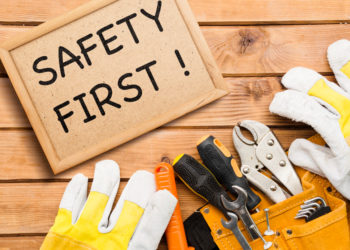In all forms of business, it’s the employer’s responsibility to keep their staff safe in the workplace. All reasonable steps should be taken to ensure that the working environment is free from hazards and is a comfortable and safe place for all employees.
Suppose an employer is found negligent in keeping the workplace free from hazards and dangers, and a staff member is injured in their duties because of this. In that case, they may be liable and face legal action or sanctions from the Health and Safety Executive (HSE). Staff may also have a legal right to claim compensation from their employer if they sustain injuries or experience ill health due to a lack of safety in the workplace.
All businesses must strive to create a safe working environment while monitoring risks and taking appropriate action to minimise them. In this article, some of the key ways that organisations aim to keep their staff safe in the workplace will be outlined.
Reducing the risk of fire
It’s easy to overlook the risk of fire in the workplace as it’s considered an extremely rare occurrence. However, in 2022, 620,758 fire-related incidents were attended by fire service personnel, which was an increase of 28% from the previous year.
Consider that many office premises have various electrical appliances and IT infrastructure. Faulty wiring or malfunctioning equipment can and does cause fires, and action needs to be taken to ensure that the risks of fire in the workplace are kept at an absolute minimum.
For starters, a fire risk assessment should be undertaken in the workplace. This raises the question, when do you need a fire risk assessment? The answer is a fire assessment should be undertaken regularly and recorded in writing if your company has five or more occupants on the premises. There are no legal requirements for how often a fire risk assessment should take place, however, the best practice is that a follow-up assessment should take place every 12 months after the first assessment. After five years, a new, comprehensive assessment should take place.
In addition to a fire risk assessment, smoke detectors should be installed in the workplace, and suitable fire extinguishers should be present, depending on the specific fire risks that are identified. For example, an electrical fire needs a different extinguisher than fires caused by combustible materials such as paper or wood. Typically, foam or CO2 is used to control electrical fires.
A robust health and safety reporting system
One of the key ways that firms can create a safe workplace and continuously monitor risks is by having a robust health and safety reporting system. When an accident or near-miss occurs in the workplace, staff must complete an incident report form. This will provide comprehensive details on the incident (including where, when, and what happened), ideally, with photographic evidence of the incident or where the event occurred. This information is then entered into a risk management database, where the details are held electronically.
Such risk management platforms allow a firm to monitor risks, look for trends in accidents and near-misses, and compile key health and safety reports and statistics. When incident reports are submitted, managers should conduct an incident investigation to ascertain the root cause of the event. Remedial actions should then be taken to reduce the likelihood of a similar incident occurring in the future.
By creating a culture where incident reporting is actively encouraged, and ideally, supported by a no blame culture, staff will be able to supply managers and leaders with comprehensive incident information. Over time, all workplace risks and hazards can be identified, with the aim of eliminating the potential for injury and accidents in the workplace, wherever possible.
Mandatory staff training
Finally, a safe working environment can be achieved by having staff who are trained in the basic concepts of health and safety in the workplace. Mandatory staff training can be rolled out for new starters as part of the onboarding process. In addition, yearly training should take place to ensure that the knowledge is refreshed and not forgotten.
A key part of health and safety training is ensuring staff know the correct manual handling techniques when lifting equipment or materials. Effective lifting and carry techniques help to ensure that staff don’t suffer musculoskeletal injuries when lifting at work. In addition, basic fire safety training should take place to ensure that fire risks can be identified and unsafe working practices (such as overloading power sockets) don’t occur.
During this training, staff (especially new starters) should be made familiar with the incident reporting system at work. This will ensure that they’re confident in submitting an incident report should they identify hazards in the workplace or become injured in the course of their duties.
David Prior
David Prior is the editor of Today News, responsible for the overall editorial strategy. He is an NCTJ-qualified journalist with over 20 years’ experience, and is also editor of the award-winning hyperlocal news title Altrincham Today. His LinkedIn profile is here.











































































